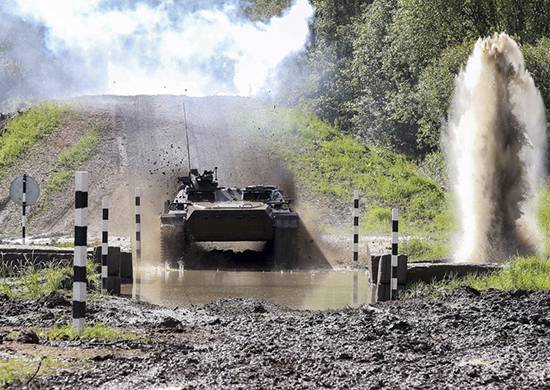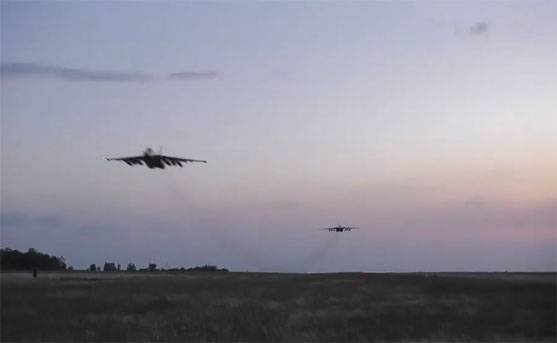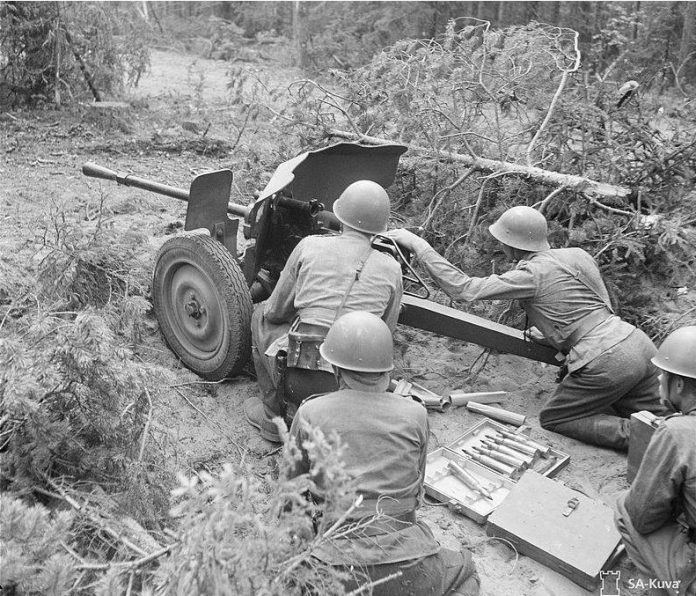
As promised, diluting the aviation branch with artillery. And we decided to start with anti-tank artillery. This has a certain sacred meaning., to be honest.
The story about the anti-tank artillery of the pre-war period should not begin with a description of the guns, not from the concepts of the development of design ideas in different countries and not even from the role of such artillery in modern warfare. Let's start with things, which do not seem to be directly related to anti-tank artillery.
guns, which we will consider today, in most cases, little known to the general reader. It didn't happen because, that they were few in number or the materials were classified. It came from that, that the designers of such highly specialized weapons, and the command of most of the armies in the world, including the Red Army, did not see the development trend of the opposing side - armored vehicles.
It's not about the usual competition between armor and a projectile., in which, hypothetically, the armor defeated the projectile. Such a thing generally happened, but not on the battlefield, and on paper. It's just that no one could predict the appearance of such monsters in the mid-30s., as KB-2, eg. Therefore, no one really prepared.
It is necessary to say especially about the Red Army here.. In our case, the axiom, the correctness of which even the authors of this material have no doubts. Any war, any military conflict, except for solving some political problems, reveals, including, disadvantages or superiority of weapons. Simply put, war is the best testing ground for military equipment and weapons.
military conflicts, in which the USSR participated in the pre-war period, especially the Soviet-Finnish war, produced the opposite effect among our military. We drew completely incorrect conclusions about the power of our anti-tank artillery. What backfired in the future with huge losses of personnel and territories. Everyone remembers well the results of using the German "armored fist" from light tanks in 1941 year.
One clarification needed, to cut off unnecessary debate among readers. Today we will talk specifically about anti-tank artillery.. Not about guns, which, due to the lack or low power of the PTS, could be used against tanks and armored vehicles, namely, specialized anti-tank guns.
1. 37-mm Pak gun 35/36. Germany
This gun generally became the progenitor for many anti-tank guns of the opposing sides.. First of all because, that Germany was actively promoting this weapon in the foreign market. In Japan, a copy of this gun was called «type 97». In Italy - anti-tank gun mod. 37/45 gg. Holland - 37-mm "Rheinmetall". In the USSR - the M30 anti-tank gun.
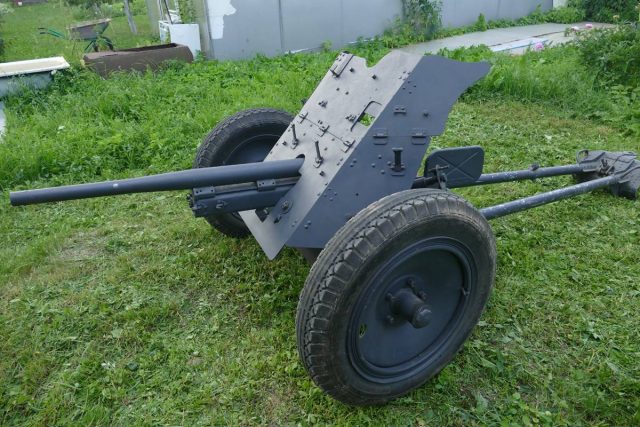
by the way, M30 became «mother» for a whole family of guns. Even in the American 37-mm M3 cannons, you can see this very weapon.. So, in fact, it turned out a kind of anti-tank grandmother.
surprising, that the gun, judging by the name, sample 1935-36 years became so popular in the world and so quickly was mastered by the industry of various countries. Alas, but it's not about the simplicity or ease of production of this gun. It's about the name.
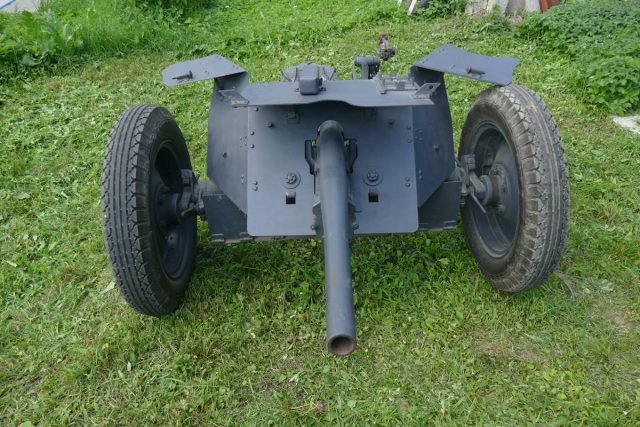
In fact, the concern «Rheinmetall» quietly developed this weapon with 1925 of the year. Furthermore, serial production of this gun was mastered already in 1928 year. It was these guns that were purchased by various countries for testing and for using their own guns..
Today it is difficult to imagine a horse-drawn anti-tank gun.. But in the late 20s - early 30s it was the norm.. That is why in the newsreels we see this weapon on «cycling» wheels. Spoked wheels.
Wherein, this is a really good and advanced weapon for its time. Heavily inclined shield, long enough, but proportional trunk, the tubular legs of the bifurcated bed made a very favorable impression, especially against the background of guns, generations of the first world war.
The name of this weapon known to us appeared later.. AT 1934 year Hitler demanded to transfer the gun to mechanical traction. what, given the small weight of the gun, was done without any problems at all. «Rheinmetall» replaced the wheels and this was the end of the alterations. AT 1936 year, the gun was adopted by the Wehrmacht already as the 37-mm Pak gun 35/36.
Pak rifle 35/36 has a fairly successful combat history. From the first application in 1936 year in Spain it became clear, that the gun really succeeded. Light tanks and other armored vehicles of the Republicans were destroyed with these guns without much difficulty..
The destruction of Polish tanks in 1939 is also the result of their use., including these weapons. Lungs, mobile cannons almost from the wheels began to fire deadly at the Poles. The Polish army could not oppose something to this weapon due to the lack of options for countering.
First «bell» the end of the Pak era 35/36 the Germans received in 1940. When France was captured, the guns could do practically nothing against French heavy and medium tanks.. Shells chipped armor, but no effective penetration took place. Actually, German anti-tank crews were the first to experience, what our gunners experienced in 1942.
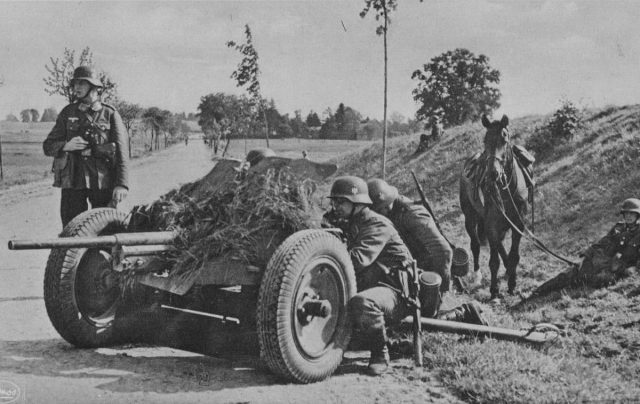
During the attack on the USSR, the Wehrmacht also used these weapons.. Just out of despair. No other PTSs were produced. Soviet T-34-76 successfully crushed German Pak batteries 35/36 caterpillars. The gunners, on the other hand, could only temporarily disable the tanks by interrupting the tracks or jamming the turret.. We are silent about KV, since there was no chance of even scratching this tank.
But the military service of this weapon continued even then, when the guns were withdrawn from the active army. Cannons became training guns in artillery schools and garrisons in the internal garrisons of Germany.
dignity: easy, mobile, cheap to manufacture.
disadvantages: extremely weak in terms of ballistics and penetration of the projectile.
2. M35 47/32 "Boler". Italy
Next country, which boasts its own anti-tank gun - Italy. But here everything is conditional. Starting from the concept «own» and ending with the concept «anti-tank».
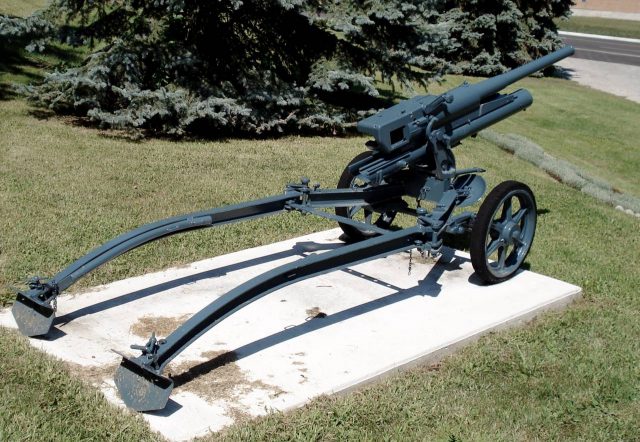
It's about the famous 47-mm gun 47/32 M35, better known as "Böhler" or "Elephantino".
Some experts and amateurs of pre-war artillery mistakenly believe, that this is an Italian weapon. The reason is simple. Italy really produced «Maybe» in such quantities, what the impression was, that it was there that this gun was created.
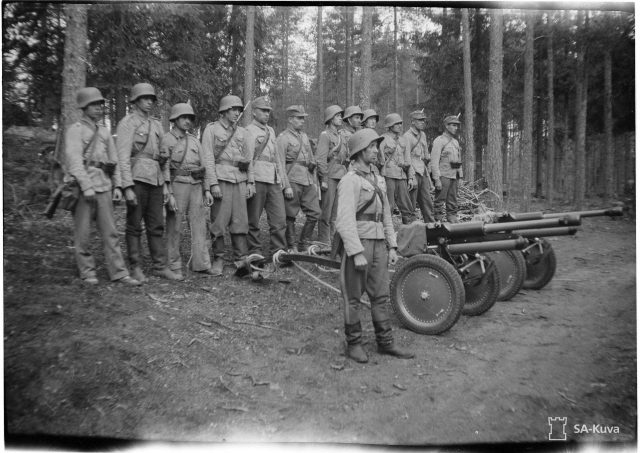
In fact, this weapon was created in Austria.. A miniature and mobile 47 mm cannon was created to arm the Alpine riflemen. Respectively, rifle, given the realities of that time, should have been more than easy, but also collapsible. What was done. The gun was quickly disassembled into several nodes and moved perfectly in the mountains with the help of mules. Or - as an option - by separating people.
This design simply pushed the designers to transfer the weapon from the category of anti-tank to the category of universal. What was done. 47/32 M35 became a weapon of direct support for the infantry. but, to tell, that she showed herself well enough in this capacity as well.. Mediocre enough weapon.
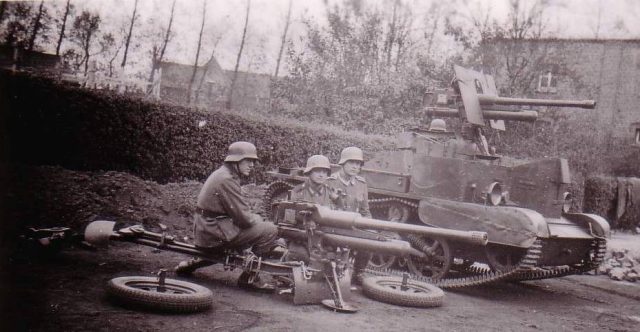
Austrian army small. Therefore, the weapon was quickly brought to the foreign market., where they sold not only the guns themselves, but also licenses for their production. This is how guns appeared in Italy, Romania and Holland. We did not lag behind in this matter.. The USSR also received a small number of such weapons.. They are known to us as М35В.
Naturally, after the annexation of Austria in 1938 year, the guns were also at the Wehrmacht under the marking of Rak 47.
But the cannon didn't just fight, she kind of fought at all, in all theaters and on both sides of the front. AT 1942 year, the allied armies in North Africa hit a large number of Italian cannons and about 200 of these were modified in Alexandria to British standards.
One person could aim such a gun (instead of two for the prototype), the design of the bed took into account the possibility of airborne landing. The gun received an optical riflescope and a 6-pounder cannon damper pad. And it was quite normal for her exes to hit.
dignity: ease, mobility, ability to work as a versatile gun.
disadvantages: a high-explosive projectile is much more effective than an armor-piercing. Armor-piercing was frankly weak.
3. A type 1. Japan.
The Japanese also got their own anti-tank gun. rifle, which we will present, were Japan's only own specialized anti-tank gun during the entire war. And the role of this weapon in the war is insignificant. Nevertheless, it is necessary to tell about it.
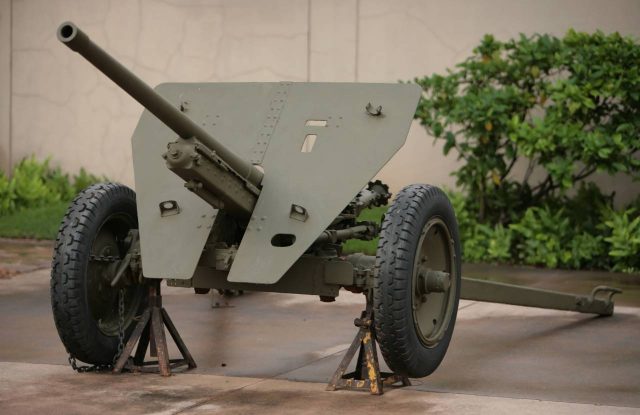
so, anti-tank gun type 1. Before the appearance of this gun, the PTS of Japan consisted of a copy of the German 37-mm Pak 35/36 - a type 94.
Appeared Type 1 already in 1941 year. At the same time, it was significantly inferior to European guns in terms of power.. But one metric was really good. rate up 15 rounds per minute. This was achieved through the use of a semi-automatic wedge gate. Worthy for an infantry support weapon, but for anti-tank it looks strange.
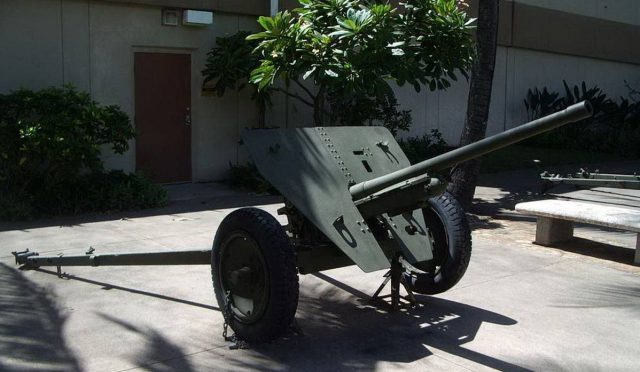
But the Japanese military experts decided, that the weapon is successful. In general, all Japanese-made weapons were distinguished by their ease and simplicity of use in combat conditions..
But if we talk specifically about the application "Type 1", rather heavy weight deprived the gun of the most important thing - mobility. And changing positions was not an easy process. Add to this a certain rabidness of Japanese soldiers., who preferred to die along with the guns and at the exit we get a constant shortage of anti-tank guns in the Japanese army.
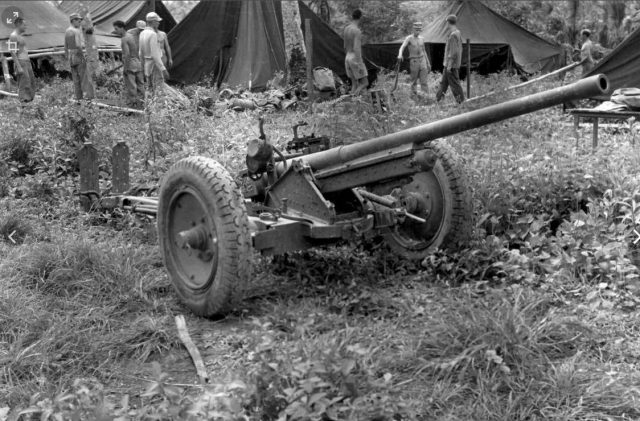
dignity: good ballistics of the projectile, ease of use.
disadvantages: the weight.
4. Too bad the model 36. Czechoslovakia
There is another country, which was annexed by Germany. This is Czechoslovakia. Yes, it is a Czechoslovak firm «Damage» was the first in Europe to start developing specialized anti-tank guns.
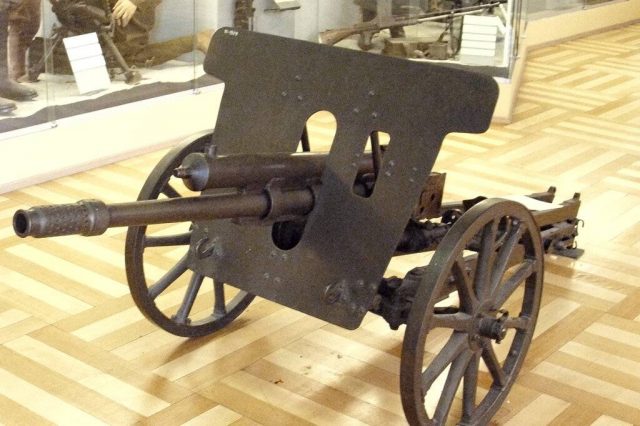
weapon, which we present today, is the second anti-tank gun of this company. first, 37-mm sample 1934 of the year, not launched into production. engineers «Damage» even then they realized the futility of the caliber 37 mm. therefore, at 1936 year was developed and launched into production 47-mm gun model 36. After the capture of the Sudetenland, model cannons 36 ended up in the German army.
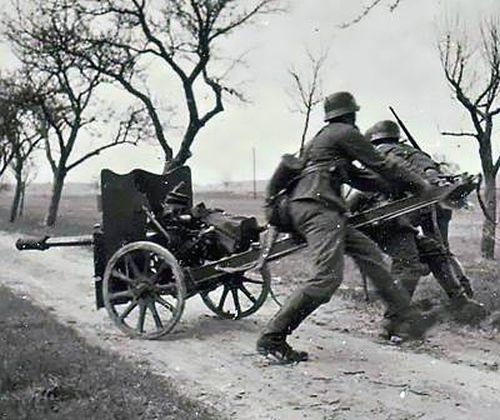
A few words should be said about the weapon itself.. At that time, it was the most unusual weapon. Starting from the shield, which had an asymmetrical curved shape and ending with a large muzzle brake with one baffle and a large brake rollback cylinder along the upper surface of the barrel.
At the time of, model 36 was the most powerful in Europe. She shot pretty heavy (1,65 kg) shells, penetrating the armor of any tank of that time at distances up to 600 m. The effectiveness of classmate guns at that time did not exceed 200-250 m. However, in the field, the gun turned out to be rather clumsy..
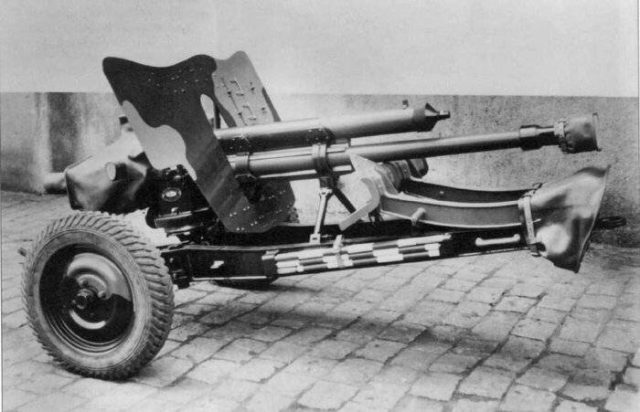
The gun went through the entire war in the army and was even installed on an ACS.
dignity: armor penetration, projectile efficiency.
disadvantages: the weight, mobility.
5. 25-mm sample cannon 1934 of the year. France
France at the beginning 20 century was the trendsetter of artillery fashion. And there, in theory, during the described period, should have been the most powerful anti-tank guns. And the French design idea, especially in the field of artillery, has always been at the forefront of the world.
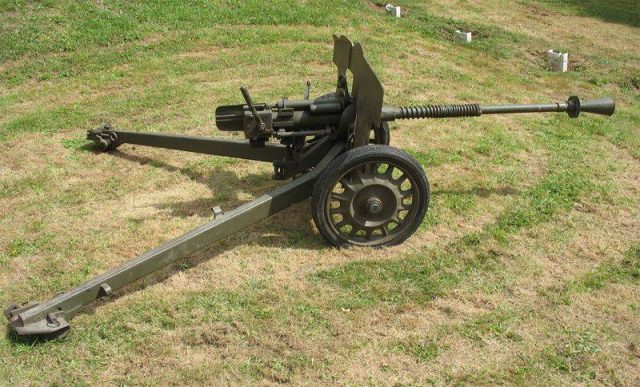
In fact, everything was very twofold..
The first weapon, worthy of our attention, is the model of the firm «Hotchkiss»- 5A-L1934. Despite, that the gun was put into service in 1934 year, the development of this weapon dates back to the 20s 20 century. true, it was designed for installation on a tank.
In fact, the gun was installed on a light chassis only in 1932 year. And they really took it into service in 1934.
But soon, due to the fragility of the hodovka design, the gun was placed on a car. Overall, the gun was reasonably well thought out., but the scanty caliber actually deprived her of even the theoretical ability to hit modern armored vehicles.
dignity: light weight and the ability to install on equipment, projectile with good ballistics
disadvantages: caliber, weak projectile, weak suspension.
6. 47-mm anti-tank gun sample 1937 g. France
But the French had another gun in the pre-war period.. Created in the shortest possible time «Atelier de Pito» 47-mm anti-tank gun mod. 1937 of the year. rifle, which the French themselves simply idolized. Designed to destroy specific tanks - German PZKpfw IV. But in fact, it pierced the armor of any then existing tank of a potential enemy.
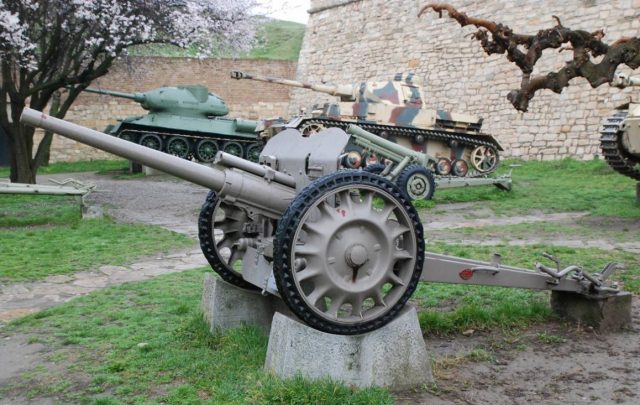
Alas, this gun was adopted only in 1938, and mass production began only in 1939. At the start of the war with Germany (May 1940 g) in the French army, there was a catastrophic shortage of these guns. But the Germans later widely used this gun under the name 47-mm Pak. 141(f). And even successfully destroyed the allied armored vehicles during the landing in Normandy in 1944 year.
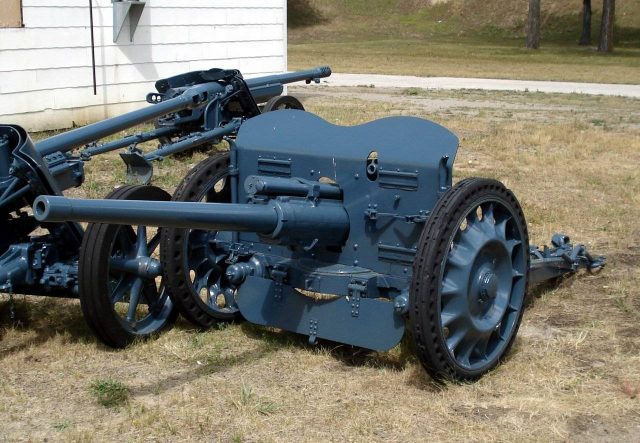
The weapon was really successful and advanced. Along with towed guns for field use, models were produced for stationary installation in the fortifications of the Maginot line. They had no undercarriage, and at the firing position, they were installed on special ceiling rail suspensions. Shooting was carried out through concrete embrasures of a special shape.
AT 1939 year, a slightly modified arr appeared. 1937/39. And in 1940 year - a new gun, in which the same barrel was attached to a three-support frame, providing a horizontal guidance angle of 360 °.
The main problem was the meager release of the gun.. it, true, fixed by the Germans.
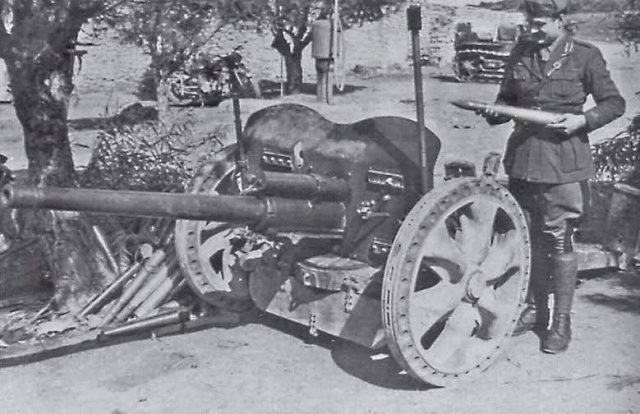
dignity: heavy and penetrating projectile with good ballistics.
disadvantages: the weight.
7. Vickers-Armstrong 2-pound. United Kingdom
Another coalition country, Great Britain, had its own anti-tank gun.. Developed by the firm «Vickers-Armstrong» at 1934 2-pounder anti-tank gun. Considering the device of this weapon, you understand, that for its time it was a good tool, but nothing more.
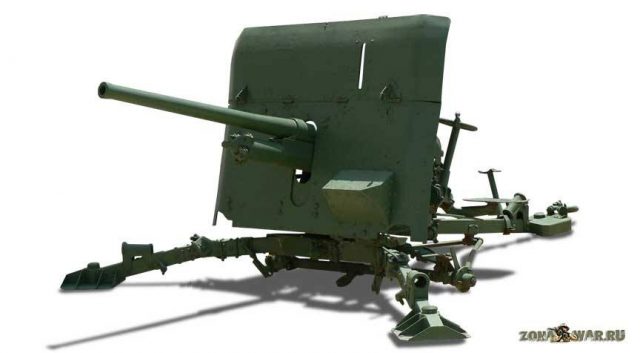
Massive weapon could not move quickly, and it was not adapted for this. So the shooting was carried out from stationary positions.. And the complexity of the design of the gun demanded quite serious preparation from the calculation.
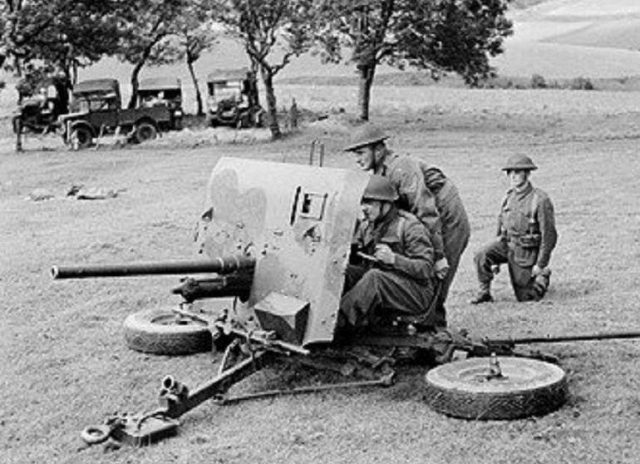
The gun began to enter the British army only in 1938 year. The four years lost by the cannon turned the gun from quite working and even advanced in some way, into obsolete. The blame was the rapid development of tanks. Improving booking quality, and the thickness of the armor in general.
Therefore, already in 1940, when did the hostilities start, the gun has become ineffective. Using it in 1941-42 years in North Africa generally put an end to this weapon. The gun was removed from service in 1942 year.
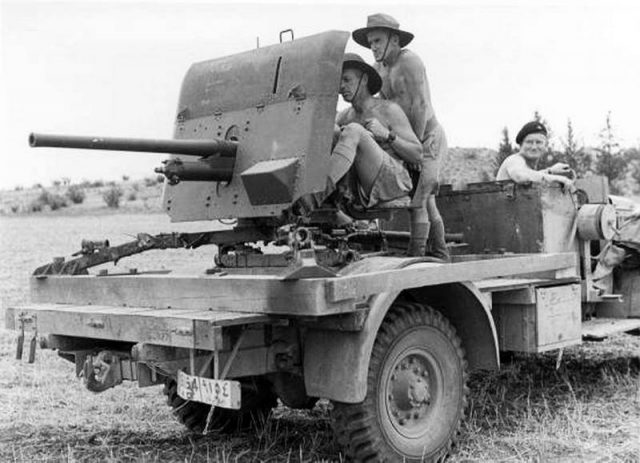
dignity: good armor-piercing shell with good ballistics.
disadvantages: the weight, lack of undercarriage, complex construction.
8. 45-mm gun M1932. the USSR.
And finally we came to the USSR. We did not lag behind European states, although they did not go to the fore. Our anti-tank guns of the pre-war period are actually the same German 37-mm guns «Rheinmetall», which the Germans themselves even later unified us and called the 37-mm Pak 35/36. We decided to independently increase the caliber of the gun to 45 mm.
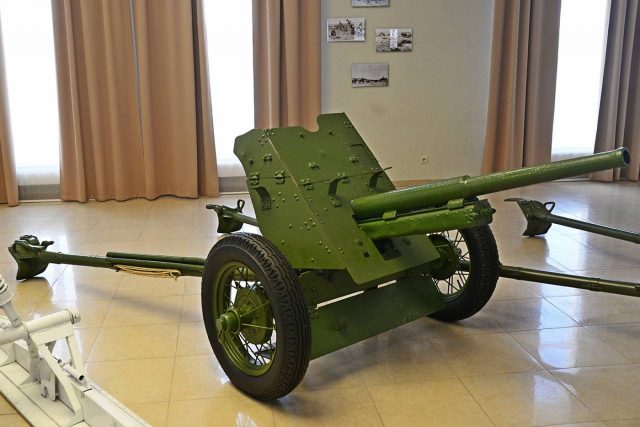
It was the M1932 cannon. TO 1940 year, the Red Army already had a sufficient number of these guns. It was these weapons that were sent to the Republicans in Spain in 1936 year. by the way, this war made minor adjustments to the design of the gun. A new version was released in 1937 year.
At the beginning of the article, we promised to talk about the wrong conclusions of our military after the Soviet-Finnish war.. This directly applies specifically to the 45-mm anti-tank gun.. Lightly armored Finnish vehicles and the same «cardboard» tanks were easy prey «forty-five» M32. Therefore, it was decided to postpone the development of new VET until the solution of more pressing problems..
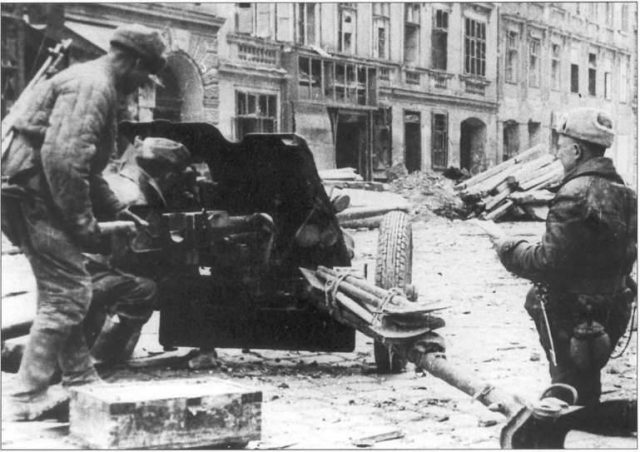
The beginning of the Great Patriotic War showed the stupidity of this conclusion.. but, even when "on fire", for some reason, instead of urgently establishing the production of the same 57-mm anti-tank guns Grabin, the artillery command of the Red Army preferred to modernize the old «forty-five». The modernization consisted of lengthening the barrel (from 46 to 66 calibres). This significantly increased the effectiveness of the M1942 gun..
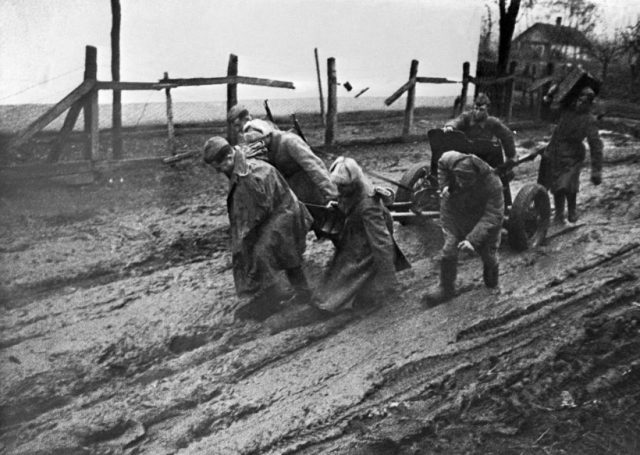
In this form, the weapon ended the war, and after the war, it participated in several more armed conflicts and wars.
dignity: good shell, mobility.
disadvantages: Hardly ever.
9. 37-mm anti-tank gun М3А1. USA.
Also a clone of the German 37mm Pak 35/36. Created on its basis, American anti-tank gun M3. In an attempt to reduce the effect of recoil forces on the frame, the gun was given a muzzle brake, which was abandoned over time. The armor shield was small and flat.
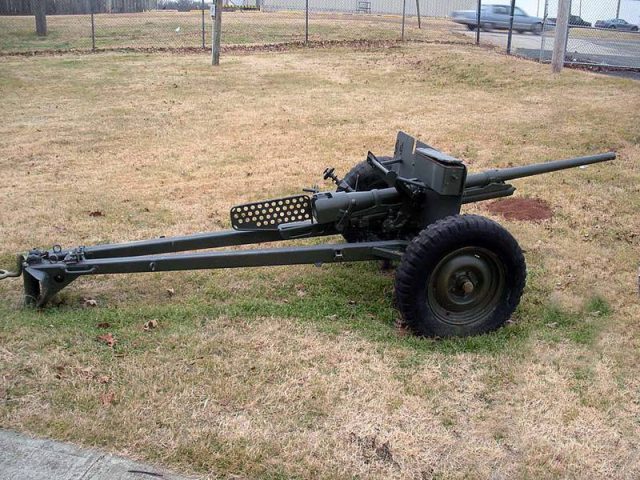
By the time this evil baby entered the troops, she was already outdated, not only morally, but physical.
TO 1941 year, fighting in Europe and North Africa showed, that to pierce the armor of modern tanks you need a larger caliber weapon. And the cannon immediately began to be replaced by others, more powerful weapons.
But on the Pacific Ocean M3A1 "entered": Japanese tanks were lighter, there were few of them, and they advanced more dispersed. And it was possible to fight them quite well with this gun.
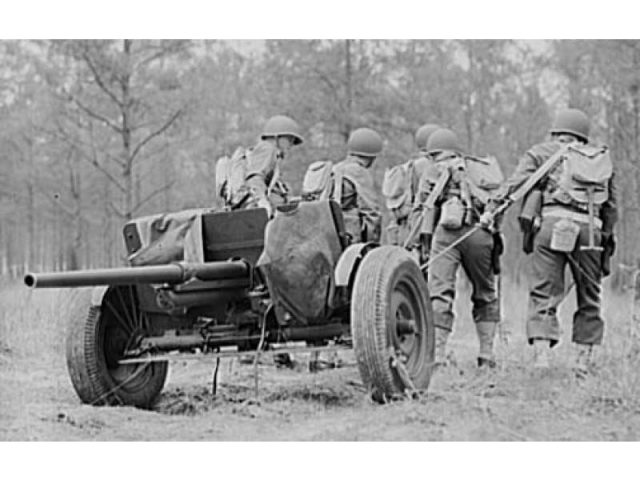
For use in amphibious operations to capture numerous islands, high-explosive and incendiary ammunition was developed specifically for this anti-tank gun.. Concrete pillboxes, so loved by the Japanese, quite normally poked with armor-piercing shells.
The small mass of the gun turned out to be very useful during these amphibious operations., therefore they continued to be produced specifically for operations in the Pacific.
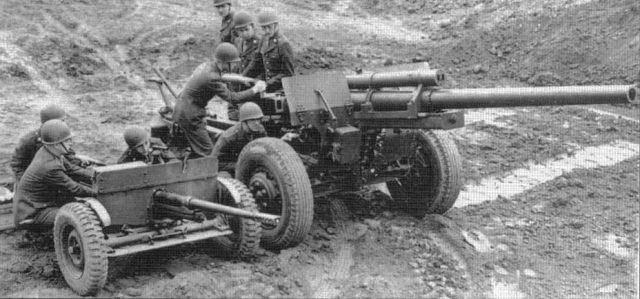
dignity: the weight, mobility, a good ballistic projectile.
disadvantages: the projectile is frankly weak.

If we consider anti-tank guns, who started World War II, you can make an unpleasant conclusion for the gunners. The development of tanks and armored equipment of the leading armies of the world in the 30s and early 40s outpaced the development of anti-tank artillery. PTO did not keep pace with the rapidly developing tanks.
it, largely caused huge losses in the initial period of the war, when the Germans widely used the tactics of tank wedges and raids of tank units on the rear. There was simply no one to protect the infantry from the powerful, well protected tanks.
However, war is a locomotive for designers.. And at the turn 1942-43 years on the battlefields appeared anti-tank guns of a new generation. But this is already the subject of the next article..
/Roman Skomorokhov, Alexander Staver, topwar.ru/








